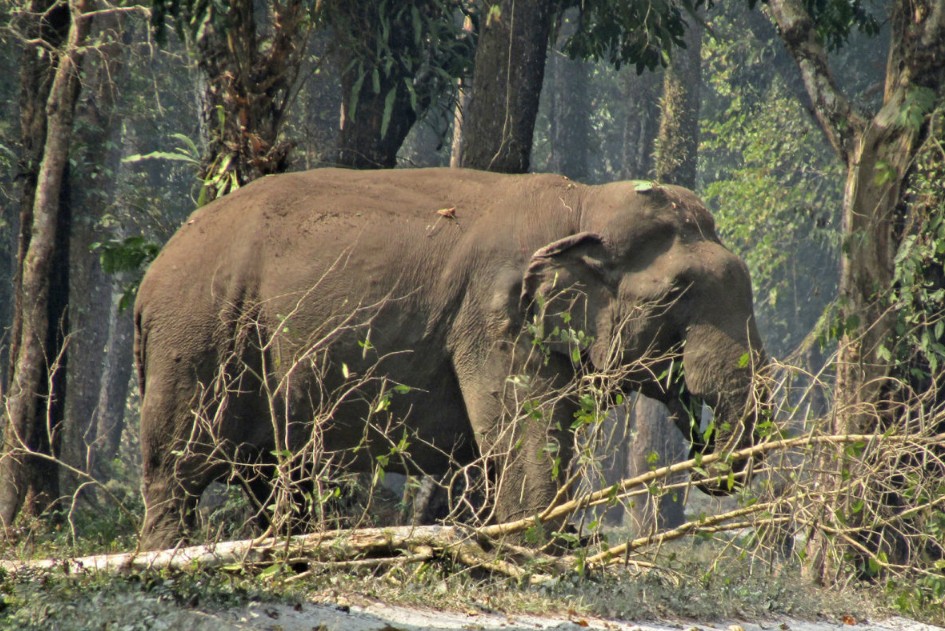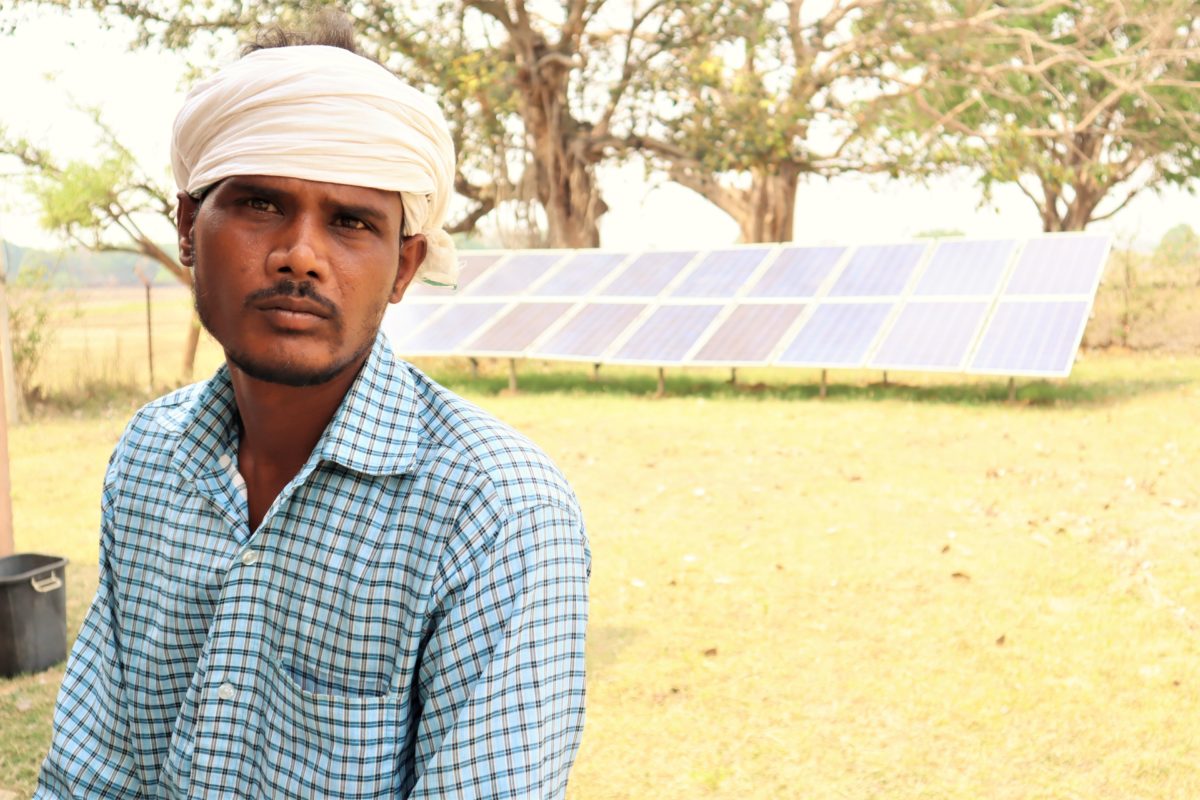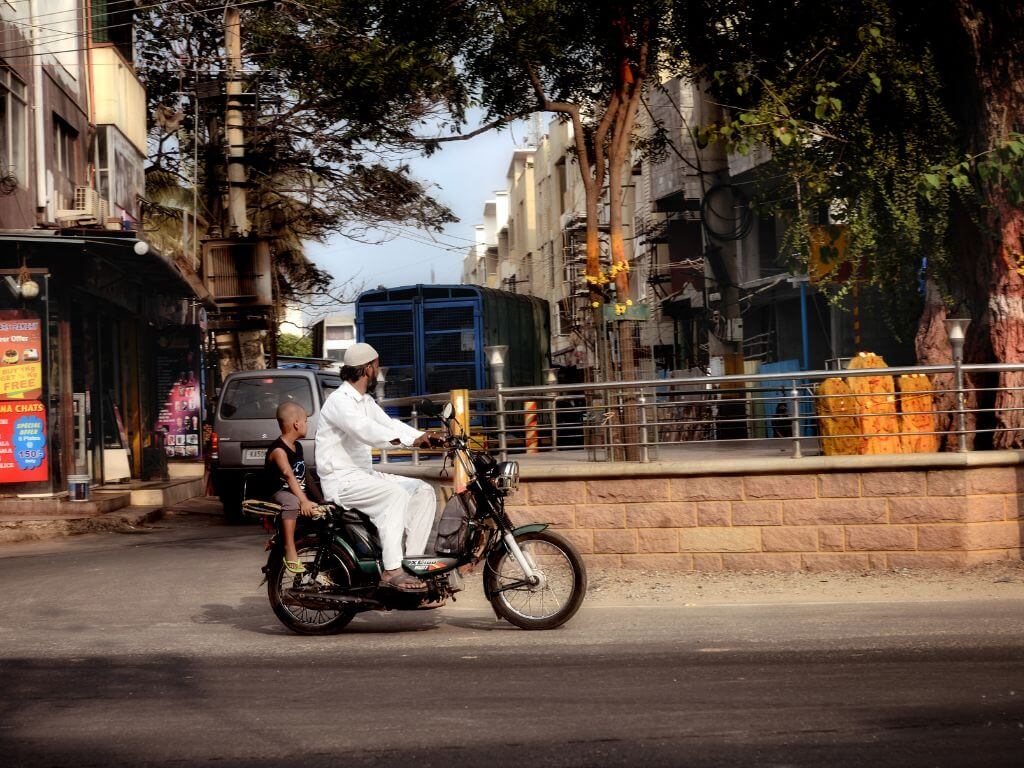Though the union ministry of human resource development is typically unconcerned, a tremor of apprehension is beginning to run through the boards and councils of management of Indias 1,286 CISCE (or ICSE) and 6,370 CBSE affiliated schools that a mass migration of the best and brightest teachers from these schools in particular may well be in the offing. With institutions of higher education in the West particularly in the US and Britain more than satisfied with the quality and performance of the large number of Indian academics hired by them, school managements and local governments in the English-speaking nations which are experiencing an acute shortage of teachers are all set to replicate the experience of their colleges and universities.
Unsurprisingly, given that the annual remuneration package of a school teacher (with three years experience) in even the most highly rated English medium CISCE and CBSE schools averages a modest Rs.80,000-100,000 against the $35,000 (Rs.16 lakh) offered by American and British local governments (with private schools offering better pay and perks), theres considerable excitement within Indias long-neglected teachers community about this new development which many regard as a heaven-sent opportunity.
Although accurate statistics of the swelling migration of teachers are unavailable, it is estimated that in the past two years, hundreds of Indian teachers have been recruited by American and British schools. And more are planning to wing their way abroad. Last year in a paper entitled Managing Trade in Educational Services: Issues in Indias response to WTO Negotiations, Satish Y. Deodhar, assistant professor at the prestigious Indian Institute of Management, Ahmedabad, noted that already about 10,000 secondary school teachers are working outside the country for sometime now, and increasingly there is a growing demand for Indian teachers, especially in mathematics, sciences and English.
However the demand for Indian teachers abroad is not an entirely new phenomenon. In the 1960s sizeable contingents of them particularly from Kerala and Tamilnadu, went to countries such as South Africa, Nigeria, Tanzania, Ethiopia and to South-east Asian countries to teach in schools and colleges. Following the Indian diaspora, job opportunities also multiplied in Indian schools overseas. The number of CBSE schools outside the country is estimated at over 100 with the largest concentration in West Asia.
|
We expect steady growth in India recruitment operations
Jason Lyons is the Houston-based vice president of USA Employment, a firm which recruits teachers from India for US schools. He responded to EWs queries by e-mail. How high is the demand for Indian teachers in the US? For the most part, the reputation of Indians in America is very good. There is widespread appreciation of their incredible academic and intellectual contributions to American society. Moreover their work ethic and dedication are also admirable traits, which many Americans lack these days. English communication skills and general social acclimatisation are the usual concerns of schools when they consider hiring teachers from India. In USA Employment we work hard to help teachers we recruit to settle down and provide ongoing advice to ease transition pains. Indian teachers encounter serious problems in downtown or inner-city schools. They find it difficult to cope with the lack of discipline and many have returned to India. Whats your comment? Managing inner-city and urban schools is difficult for all teachers, not just those from India. The environment is not conducive to learning and many factors work against healthy classroom discipline. However weve seen many of our teachers overcoming discipline and related problems and helping students to enhance their grades and transform into better young people. The teachers diligence and perseverance make the difference. How many teachers has USA Employment recruited from India thus far? Which subject teachers are most in demand? USA Employment has placed more than 100 teachers from India in schools in ten states in the US since 2002. We expect steady growth in India recruitment operations over the next few years. The teacher shortage in America has intensified due to a number of factors, including retirement of many baby boomer teachers and the higher standards demanded of teachers under the federal legislation known as No Child Left Behind Act. The greatest demand is for math, special education and science teachers. However weve also placed some outstanding elementary and English teachers from India in US schools. What are the greatest challenges likely to confront Indian teachers in the US? Though our education systems are similar in concept, the implementation execution of lessons and delivery of instruction is vastly different. Moreover students general lack of respect for authority figures and their lukewarm attitude to education and their future, is often a sobering reality for teachers coming from India, where its cool to be academically gifted. |
The new wave of academic migration is being powered by an acute shortage of teachers in western countries, especially the United States and Britain. It is estimated that there are as many as 22,000 vacancies for school teachers in the US of which more than 10 percent could be open to Indians. The shortage of maths, science and English teachers is particularly acute as native teachers migrate to lucrative jobs in other sectors of the economy. According to the report of the National Commission on Teaching and Americas Future, there is a chronic teacher retention crisis in the US with as many as one-third of them quitting the profession after just three years on the job and half quitting after five years. The report entitled No Dream Denied: A Pledge to Americas Children says that more than 250,000 American teachers opt out of classrooms every year in favour of other jobs and professions. Currently teachers leaving for reasons other than retirement in the US outnumber those retiring by about three to one.
Meanwhile, US President George W. Bush has set a 2005/6 deadline in his No Child Left Behind Act for schools to have highly qualified teachers in US classrooms. This has resulted in a mad scramble to recruit teachers from abroad to fill the growing number of vacancies in public (i.e government) schools. Apart from India, the Philippines and the Caribbean, both of which have large English-speaking populations, are major recruitment centres.
The process by which teachers are mopped up from developing countries is fairly simple. Typically school boards inform recruitment agencies about vacancies following which the agencies advertise in local newspapers overseas. After initial vetting by the agency, US school district officials visit the country to interview short-listed candidates. Sometimes interviews are conducted over the telephone or by video conferencing. Selected candidates are usually given an orientation course before they leave for the US/ UK, advising them what to expect by way of weather conditions, lifestyle and culture, western etiquette and behaviour.
|
Ma foi Management Consultants Ltd is a leading Chennai-based human resources development recruitment and services company promoted in 1992. With an annual revenue of Rs.49 crore, it has nine offices across India, three in Dubai, London and Singapore. Excerpts from an interview with general manager E. Balaji: When did Ma foi start recruiting teachers for schools overseas? We started recruiting teachers in 2002, for schools in Dubai and Britain, where there is rising demand for Indian maths and science teachers. We havent started recruitment for the US market yet. What qualifications do you look for in the teachers you recruit? Most of our clients prefer teachers with postgraduate qualifications and over seven years experience in reputed private schools in India. Male teachers are easier to recruit for overseas postings as they dont have the domestic constraints of women teachers. What kind of remuneration can an Indian teacher expect in the UK or Dubai? A teacher cant expect to save much in Britain as the cost of living there is high. However, although I cannot quote a figure, they definitely earn much more than what they would in India. There are other benefits too. They get wider exposure abroad and the freedom to move from Dubai to Britain and on to the US if they wish. They would also get better positions in India if they decide to return. How much does it cost a teacher to get a job? Ma foi does not charge job applicants anything. All our dealings are with school managements or ministries of education in Dubai and Britain. The hiring authorities pay our fees and bear the airfare and other expenses of teachers they recruit. |
After processing of an H-1B visa (which could take about six months) a newly recruited teacher flies to the US where he/ she gets a social security number, a feel of the place, learns to drive and shop, handle credit cards, etc. Teachers recruited abroad also get three to four weeks training, most of which relates to how to deal with classroom situations. Although most recruitment agencies dont charge teachers for these services, some do and it could cost between Rs.3-4 lakh to land a job in the US. Most school jobs pay near or about US$35,000 (Rs.16 lakh) per year. Since many teachers who go abroad dont take their families, at least initially, and often share accomodation with colleagues from India, it enables considerable savings, far in excess of anything possible back home.
Inevitably government officials who tend to under and devalue teachers on home turf and do precious little to improve their pay and service conditions, take a dim view of their heading for greener pastures. Its not the number of teachers leaving that poses a problem but the fact that we will lose our better faculty, particularly from quality government schools. In private English medium schools 80-85 percent of teachers are women who are unlikely to apply for jobs abroad as they are second income earners with families to look after. Most applicants for teaching jobs abroad are teachers from good quality government schools, says Marmar Mukhopadhyay, joint director of the Delhi-based National Institute of Educational Planning and Administration (NIEPA). When teachers leave their jobs and emigrate, it could take as long as six months to replace them, during which period their students are adversely affected.
While most people tend to deplore the teachers drain phenomenon, Maya Menon, director of Bangalore-based The Teachers Foundation discerns a silver lining. It is not necessarily deplorable. In India teaching is perceived as a stagnant profession with slow upward mobility and modest financial rewards. If new opportunities to work abroad with decent pay have arisen it will motivate more young people to enter this increasingly shunned profession, says Menon.
But while the pay even after adjustment for higher costs of living is many multiples higher, teaching in public schools abroad (most recruitments are for government-funded public schools) can be a difficult challenge for the average Indian teacher. Apart from obvious cultural differences and accent-related problems, the biggest challenge facing school teachers from India is maintaining classroom discipline. Unlike private schools where children tend to be more disciplined, public schools in the US and Britain are notorious turfs of over-aged children with serious psychological and motivation problems. Most inner-city school children are from broken homes and prone to chronic indiscipline and violence.
Chronic indiscipline, racial abuse and aggressive behaviour which is the rule rather than exception in inner-city (cf. affluent suburban) schools in the US and Britain and most western countries can pose serious operational problems for teachers from the subcontinent where respect even veneration for teachers is a deep-rooted cultural tradition.
|
Visas. A three-year visa renewable for another three years is issued. All teachers in America sign 12-month contracts; contracted teachers are given an H-1B work visa. A contracted teachers wife and unmarried children under age 21 are issued H-4 (or dependent) visas. Children are enrolled in a public school immediately (public schools are free for all children), and college-age children will be able to attend college. Teachers who wish to reside permanently in America are usually able to do so after applying for conversion of their H-1B work visas into a Green Card. Most Indian teachers apply for their Green Cards within the first 18-24 months of arrival. Expenses. The following expenses are required to be borne by contracted teachers after they receive a guaranteed employment contract from an American school. 
Airfare. Contracted teachers are usually required to pay their own airfare to the US after being selected and hired by a school or local authority. H-1B visa fees. This includes premia for expedited processing of an application for lawful employment in a US school/ district. A fee for resident visas for a contracted teachers family members (spouse and children under 21 years of age) is also payable. Moreover all incidental charges incurred by an employment agency, including mail, courier, international phone/ fax, visa coordination, etc are payable. Immigration attorney fee. This fee becomes payable after a contracted teacher begins earning and includes the expedition of visa fees. Some school districts require contracted teachers to use their appointed attorneys, who are generally more expensive. Candidates are usually informed about legal fees payable prior to signing of the contract of employment. Agency fee. A tax-deductible agency fee is liable to be paid to the recruitment agency for services rendered. It can be paid in monthly installments. Relocation assistance. For a modest fee, the better American teacher recruitment agencies (such as USA Employment) offer comprehensive relocation assistance to teachers. Contracted teachers who have relatives and/or friends in America willing and able to help relocate them on arrival can opt out of USA Employments relocation package. In this event, the designated relocation contact (friend/ relative) of a contracted teacher must make a quality-assurance commitment to USA Employments relocation coordinator, guaranteeing that all critical relocation requirements will be completed in time. The intent is to ensure that contracted teachers settle down quickly in their new environment. Contracted teachers should budget $5,000 (Rs.2.3 lakh) to cover numerous relocation expenses. USA Employments relocation specialists offer cost-effective housing and transportation advice. When applicable, USA Employment will involve local residents (ideally from the same ethnicity as the contracted teacher) to assist in relocation and acclimatisation. Most American cities have thriving international communities. Spouses of contracted teachers must find employment for themselves. USA Employment personnel provide free guidance without any commitment. However the agency provides guidance to contracted teachers on matters relating to certification and meeting other requirements of local school managements or governments. Source: USA Employment (www.usaemployment.org) |
Whereas in India teachers usually have to cope with two or three students per class who pose behaviour problems, in most inner-city schools abroad only a handful are likely to observe the norms of propriety and good behaviour. Metal detectors are not uncommon and students are often not allowed to take even compass boxes into their classrooms. Some Indian teachers find the experience so stressful that they quit their jobs and return home Indian teachers not exposed to American behaviour norms could suffer a severe culture shock. The discipline that they are familiar with in Indian schools is lacking to a degree here, so a period of adjustment is required, says Ayesha Chopra, a US-based teacher trainer.
This is why some of the more responsible and better-managed Indian-run recruitment agencies pay special attention to preparing Indian teachers for American classrooms. We make sure teachers know the kind of assignments they are taking on. Inner-city government schools have large numbers of African-American children. Teachers from India have to understand and respect them. They are forewarned that they wont get the classroom respect they are accustomed to in India. We advise them to become culturally acclimatised and get used to children addressing them by name, says Paddy Sharma, CEO of Global Teachers Research and Resources Inc., USA, which has placed 62 Indian teachers in American schools.
However the upside is that Indian teachers who migrate abroad are likely to be pleasantly surprised by the superior teaching aids available in American and British schools which facilitate teaching as also by the reality that teacher pupil ratios tend to be way below the 1:63 national average in India. Moreover Indian teachers abroad have already won themselves a good reputation for their diligence in explaining study subjects. This is in sharp contrast to the workplace attitude of an uncomfortably large number of American teachers who simply turn on their OHPs and offer little explanation for the material contained in them.
Moreover Indian teachers in the US have also given a good account of themselves by training their less qualified brethren within the US public school system. Given the pressing shortage of qualified teachers, plumbers, carpenters and housewives with minimal qualifications are recruited as part-time teachers. It is estimated that 40 percent of maths teachers in the US are not qualified to teach the subject. But on the debit side of the ledger Indian school teachers are likely to discover there is little scope for professional advancement as they tend to be far ahead of their American peers.

K.V. Shashikala, (39), an alumna of Bangalore and Madurai Kamaraj universities, taught for 11 years in Bangalore schools, including seven years in Sri Kumaran Childrens Home. In 2001 she responded to a teacher recruitment ad in the Deccan Herald inserted by the New-York based Teachers Placement Group for a school teachers job in the US. I went to Cleveland, Ohio, in 2002 to teach maths and science to students in grades VIII-X. I was teaching at a school which provides free education up to grade XII. While in class VII in India the average age would be 12 or 13 at most, in Cleveland grade VII students were 15-16 and in my classes of 30-35 they were even older. Most were Afro-Americans. In these inner-city or downtown schools the threat of physical abuse is omnipresent. Cases of beer bottles being flung about in class, teachers having their heads banged against blackboards and so on are fairly common. In our school a class VII teenager gave birth to triplets. It was the responsibility of the teacher to ensure she got the time to take care of her babies who were in a creche attached to the school. With much of my time and effort spent on maintaining class discipline, I found myself discharging the functions of a jailor rather than a teacher. The two week orientation training given on arrival was all about how to cope with classroom discipline situations. With instances of classroom shootings and killings hitting newspaper headlines, all students entering class had to pass through metal detectors to ensure they didnt carry dangerous weapons into school. Sharp instruments such as compasses are banned and for geometry class we had to manage with pictures on OHPs (overhead projectors). Quite often I had to hand students my bangles to draw circles. Because of the acute shortage of teachers I was also asked to train part-time teachers many of whom were construction labour, in maths. Moreover the teachers degree of involvement with students is minimal. Quite often they switch on their OHPs and go off to the canteen. Very little help is provided to students by way of explanations. Thats perhaps why my students were thrilled with the Indian way of teaching. Compared to my yearly pay package of Rs.70,000, the money in the US was good. I was paid $37,000 (Rs.17 lakh) a year and as I shared residential accommodation with other Indian teachers, I was able to save about $16,000 which is quite a lot when converted into rupees. But for Indian teachers there is very little scope to grow professionally. In January this year I returned to India and was lucky to get back my old job of teaching science and maths at Sri Kumaran Childrens Home. Of the four people in our group, three have returned. Though I havent officially resigned and am still being invited back, its very unlikely that I will return to the United States. |
But even as American educationists are beginning to appreciate the many virtues of Indian teachers who are unsung in their own country, recent changes in visa rules could pose a bigger challenge to them than coping with unruly students. Recently the US sharply reduced the number of H-1B visas issued annually under which foreign health, education and IT professionals are readily admitted into the US, from 195,000 in 2002 to a mere 65,000 this year. The sharp cut in H-1B visas has not only affected outflow of teachers but of all emigrants to the US, says Sayed Zafar, an independent Mumbai-based visa consultant. Since 9/11, visa applications are scrutinised strictly and even after getting the notice of an action letter (approval for issue of a visa) the local American consulate can block it. An H-1B approval from the US does not guarantee a visa from the US consulate here.
Currently over 10,000 foreign teachers in the US are employed under the H-1B visa which is valid for three years with the possibility of renewal for another three years. Opportunities for teachers do exist under other visa categories, though for shorter periods. However apart from the US there is rising demand for Indian teachers in the UK and the Middle East, indeed even in China for 30,000 teachers to teach English. However the Chinese arent yet reconciled to the idea of Asians teaching English to other Asians. But its just a matter of time before this mindset changes.
In the forums of the World Trade Organisation it has been a long-standing demand of developing nations that trade liberalisation should not be restricted to removing barriers to cross-border trade in goods, but should also free-up trade in services. If this proposition is accepted as seems likely, there is every likelihood that India could become the worlds largest supplier of trained school teachers to developed countries. Writing in The Economic Times (November 20) Arun Maira director of the well-regarded US-based Boston Consulting Group says that a study of demographic trends indicates that by the year 2020 most of the worlds larger nations are likely to experience severe labour shortages because of their ageing populations. According to him by 2020 the US will have a deficit of 17 million working age people; China 10 million, Japan nine million and Russia six million where-as India will have a surplus of 47 million.
Quite obviously the projected manpower shortages in developed nations will attenuate the already evident deficit of trained teachers. Therefore it makes sense for public and private sector educationists to tap this projected pool of surplus working-age Indians and train them to become teachers for India and the world beyond national borders.
Deep in the collective subconscious the oppor-tunities offered by the changing demographic profile of the world are already galvanising education entrepreneurs across the country into action. In November the Bangalore University Syndicate approved the establishment of 136 teacher training (B.Ed and B.P.Ed) colleges in the city and 32 for the Kolar district. Though its highly unlikely that more than half of the applicants (mostly politicians) who have been licensed to promote these college will actually establish them, even respectable mainstream educationists such Dr. K.P. Gopalakrishna, chairman of the Bangalore-based NPS Group of seven highly rated secondary and higher secondary schools has identified teacher training as the next high growth sub-sector within the education system. If in the near future licence-permit raj in higher education is removed, I would be interested in providing high quality teacher training education, Gopalakrishna told EducationWorld last month (see EW November).
Meanwhile though the accelerating exodus of school teachers for foreign shores is likely to cause short term difficulties for school managements and their students, it will also give a much needed fillip to the teaching profession by attracting bright young people to join this hitherto unrewarding vocation which is perceived as being devoid of professional or financial opportunities. This in turn will raise standards of school education in India which remain poor and are largely responsible for the rock-bottom achievement levels of the great majority of Indias 200 million school children.























